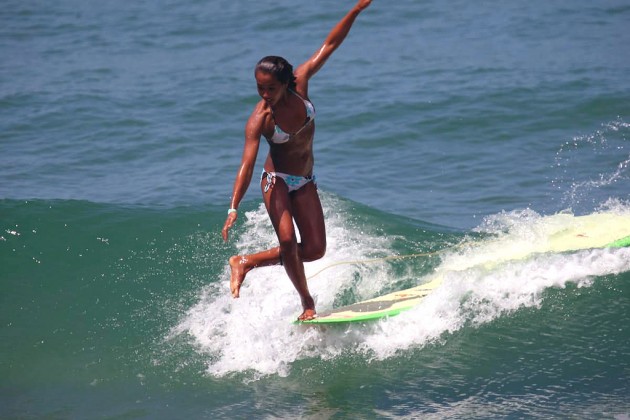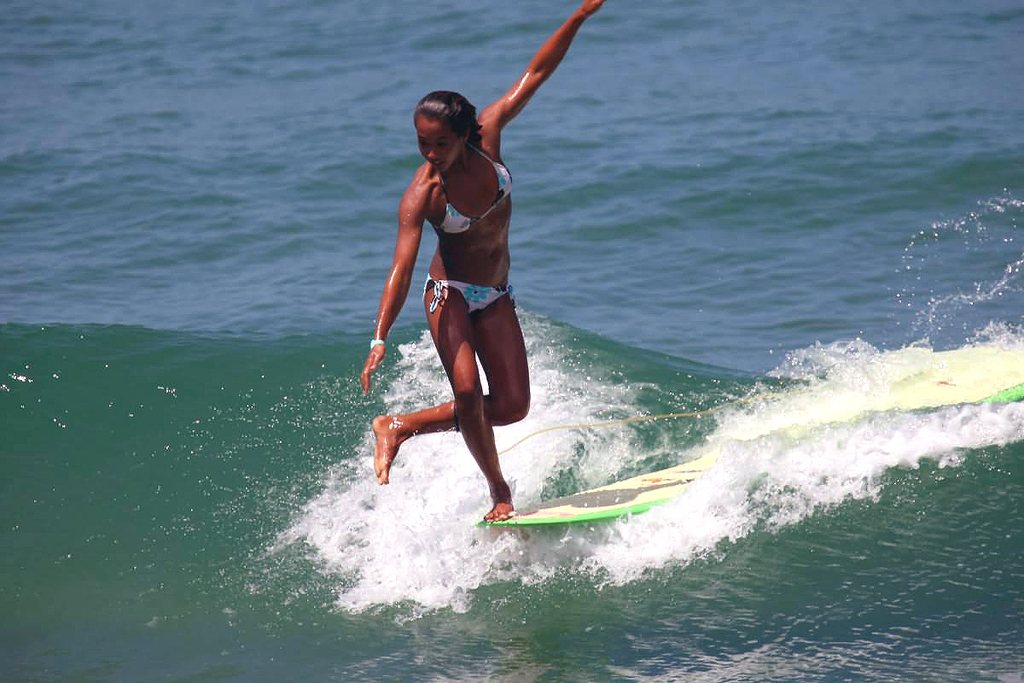- 5 Longboard Surfing Tips
By: Ryan Curtin
Break Studios Contributing Writer
These five longboard tips are designed for the intermediate rider to improve his or her style. Longboarding is all about style, and the following longboard tips will help anyone get a little closer to trimming like Joel Tudor. When done properly, classic longboarding is one of the most stylish and aesthetically pleasing forms of surfing. These classic longboard tips will have you trimming and angling like Dora in no time.

Leash selection: One of the best longboard tips you will ever hear has to do with leash selection and the choice of whether or not to wear a leash. Ideally, in classic longboarding, it is best to not wear a leash at all. Going leash-less not only looks classically cool, it also frees up your feet to cross-step and go switch without getting tangled. If you must use a leash but still want the freedom to walk the board, it is best to purchase a longboard leash that attaches to your upper calf. Calf leashes free up the rider’s feet, which makes it easy to move around on the board. Beginners should always wear a leash. Remember, the leash must always be longer than the board you are riding, and leashes are always fastened to the back foot.
Trimming: Unlike the other longboard tips on this list, this particular tip is applicable to all surfing disciplines. Trimming is positioning the surfboard in a spot for optimum speed and minimum resistance. The fastest part of a wave is the area directly in front of the breaking part of the wave. Riding high on the face of the wave is faster and better suited for most longboarding moves.
Fading: This classic move is an easy way to add style to your longboard repertoire. To fade on a longboard, point the nose of the board in the opposite direction that the wave is breaking. Paddle into the wave and popup. As you drop down the face of the wave, start to turn the board around in an exaggerated bottom turn. Advanced riders may try a “drop-knee” turn. This drop-in technique stalls the board and sets the rider up for cross-stepping and noseriding.
Cross-Stepping: This classic move is the foundation of longboard style and one of the surest ways to impress the old heads at your local break. Of all the longboard tips on this list, this is perhaps the most important. To cross-step, make sure the board is in trim. With steady balance, quickly cross the leg of your rear foot over your front foot, then quickly bring your rear foot (the original front foot) around behind the other foot. Repeating this maneuver stylishly moves the rider towards the nose of the board. The reverse of this maneuver will quickly move you back. Balance beams and curbs are great places to practice.
Noseriding: Cross-stepping brings the rider to the nose of the board; noseriding is what to do when you get there. Noseriding, or “hanging ten” is the ultimate classic longboard maneuver. After cross stepping to the front third of the board, place both feet forward and enjoy the glide. True noseriding takes place when five or ten toes hang off the front of the board. In order get the most tip-time as humanly possible, position the board in trim at the top third of the wave, with the back half of the board locked in the curl. Arching your back on the nose is one of the better longboarding tips for noseriding because it keeps weight off your feet and elongates time on the nose.
For an awesome longboard vid featuring Ned Snow, click here https://www.gaysurfers.net/2011/03/5-longboard-surfing-tips/


